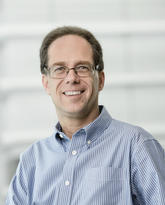
Samuel Weiss
Professor
PhD (Doctor of Philosophy)
Contact information
Web presence
Research
Research Interests
Brain Tumour Stem Cell Biology and Experimental Therapeutics
My laboratory discovered a mammalian central nervous system (CNS) stem cell that can be induced to divide in cell culture and in the intact brain, and produce the three major cell types of the CNS - neurons, astrocytes and oligodendrocytes. Remarkably, this CNS stem cell is present in both embryonic and adult mammalian (from rodent to human) brain. Recent evidence suggests that the adult human brain stem cells may be at the origin of the malignant human brain tumour – glioblastoma multiforme (glioma).
Thus, the current research goal of the Weiss laboratory is to gain insights into the aberrant cell biology mechanisms of human brain tumour stem cells (BTSCs) that may lead to brain tumour initiation, therapeutic resistance and recurrence. During the past few years, we have established close to 100 BTSC lines from human glioma patients. These BTSC lines display many of the fundamental characteristics of stem cells such as ability to grow as neurospheres under serum-free conditions, multilineage differentiation and clonogenicity. Importantly, they maintain the key parental tumour mutations and mimic human tumour growth in vivo in orthotopic xenografts in NOD SCID mice. We were the first group to report the establishment of BTSC lines with endogenous expression of the IDH1 mutant enzyme and our BTSC library has lines with many of the key characteristic mutations reported in glioma.
We employ a combination of cell biological, molecular, biochemical, and genomic approaches and use BTSCs as a model to study glioma biology and therapeutic response in vitro and in vivo. We are currently focused on four major areas of research:
1. The mechanisms of autocrine growth factor signalling in BTSCs leading to uncontrolled growth in brain tumours
2. The "stemness" factor - investigating the cell biology of BTSCs to understand disease initiation and recurrence
3. Intracellular oncogenic signalling pathways in BTSCs and a translational approach to experimental therapeutics and new drug therapy for brain tumours
4. Understanding BTSC metabolism with a special focus on the IDH1/2 mutation
We believe the BTSC model system is a powerful tool to investigate human glioma biology and develop novel experimental therapeutics for the disease.
